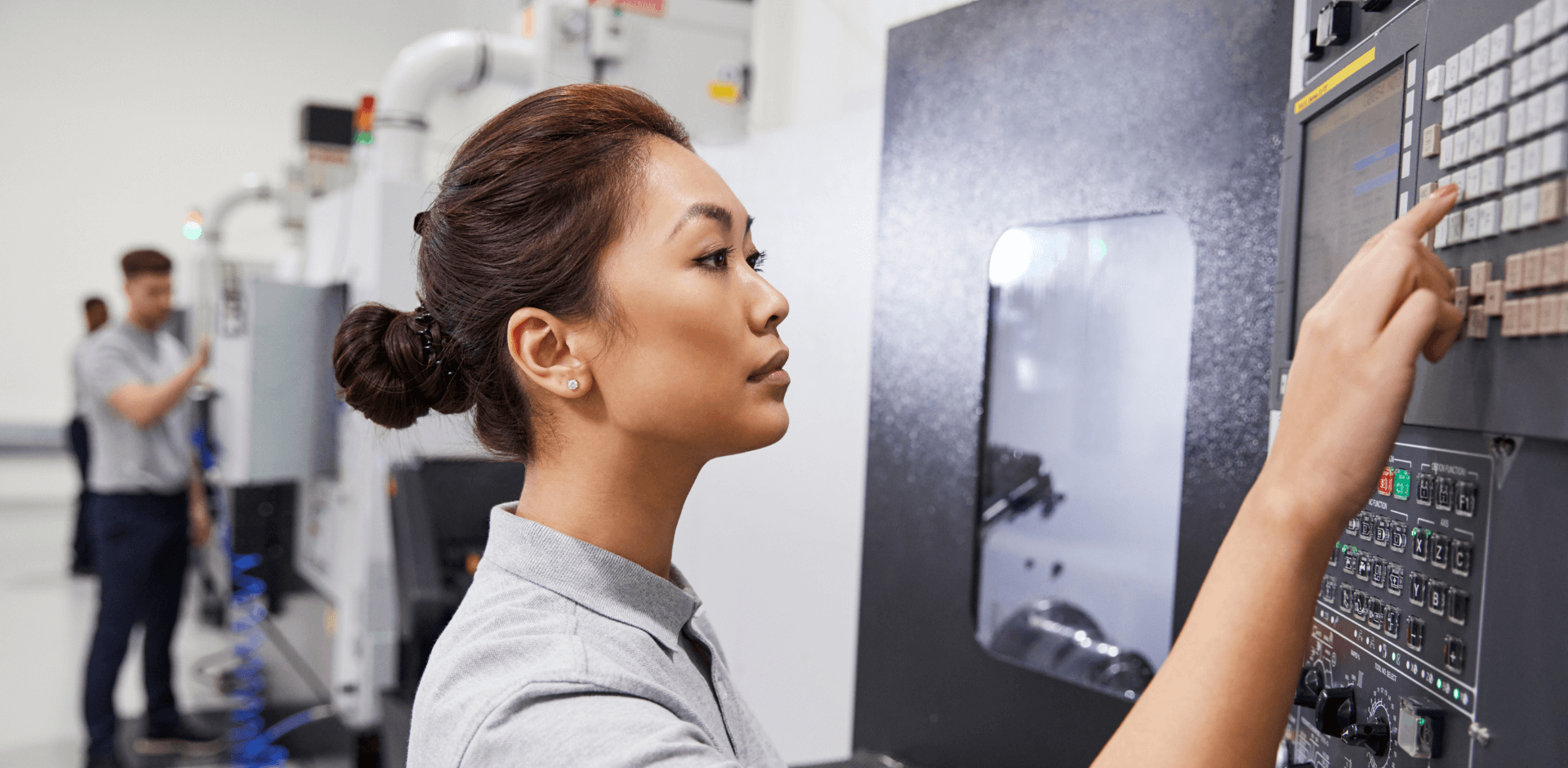Dec 10, 2025
4 min read
How to Get a Loan for a Seasonal Business in 5 Steps
Seasonal businesses face financial challenges that year-round operations often don’t. Whether...
Read story

In today’s competitive landscape, strategic equipment investment is essential for maintaining operational efficiency and driving business growth. Whether acquiring new machinery or upgrading existing tools, these investments impact immediate capabilities and long-term financial health. In 2024, business investments in new equipment contributed significantly to the U.S. GDP growth, underscoring their critical role in economic progress and competitiveness. This article outlines why equipment investment is crucial for enhancing productivity, reducing costs, and achieving sustainable development, offering key insights to support informed decision-making.
One of the primary benefits of equipment investment is increased efficiency. Upgrading or acquiring new equipment can streamline operations, reduce downtime, and enhance productivity. Modern equipment often incorporates advanced technology that automates repetitive tasks, allowing employees to focus on strategic, value-added activities. This shift boosts morale and enables businesses to meet deadlines more consistently. For example, Starbucks’ recent investment in new equipment led to a margin expansion to 23.2% across North America, showcasing how modernizing operations can significantly boost efficiency.
New equipment typically requires less maintenance than older models, resulting in fewer workflow disruptions. Investing in energy-efficient machinery can reduce utility costs and align with sustainable business practices, offering a competitive advantage.
To maximize efficiency benefits, businesses should:
Strategic equipment investment enhances operational efficiency and positions businesses for long-term growth and success.
Investing in modern equipment can significantly sharpen a business’s competitive edge. Staying ahead in today’s fast-paced market often requires leveraging innovative tools and technologies. By upgrading or acquiring new equipment, businesses can offer enhanced products or services, differentiating themselves from competitors who rely on outdated technology. For example, a manufacturing firm investing in state-of-the-art machinery can produce goods faster and with higher precision, impacting product quality and customer satisfaction.
Moreover, cutting-edge equipment can attract top talent eager to work with the latest technologies, improving work quality and fostering innovation. It also signals to clients and partners a commitment to growth and excellence, potentially opening new opportunities.
To maximize competitive benefits, consider:
As John Chambers, former CEO of Cisco Systems, noted, “If you don’t transform and use this technology differently—if you don’t reinvent yourself, change your organization structure; if you don’t talk about speed of innovation—you’re going to get disrupted.” This underscores the necessity for businesses to invest in modern equipment to maintain a competitive edge.
Tax advantages are a significant consideration when contemplating equipment investment. Understanding these benefits enables business owners to make informed decisions aligned with their financial strategies.
Depreciation Deductions: The IRS allows businesses to recover the cost of qualifying equipment over time through depreciation deductions. The Modified Accelerated Cost Recovery System (MACRS) is commonly used, offering faster cost recovery than the equipment’s actual lifespan. Additionally, Section 179 permits businesses to deduct the full purchase price of qualifying equipment in the year it is placed into service, subject to annual limits. For tax years beginning in 2024, the maximum Section 179 deduction is $1,220,000, with a phase-out threshold of $3,050,000.
Bonus Depreciation: This provision allows businesses to deduct a significant portion of the cost of eligible property in the year it is placed into service. For property acquired and placed in service after December 31, 2023, and before January 1, 2025, the bonus depreciation percentage is 60%.
Energy-Efficient Equipment Incentives: Businesses investing in energy-efficient or renewable energy equipment may qualify for additional tax credits and deductions. Qualified clean energy property placed in service after 2024 may be classified as 5-year property under MACRS, allowing for accelerated depreciation.
To maximize tax advantages, business owners should:
Leveraging these tax benefits can reduce immediate tax liabilities and support long-term financial planning, freeing up capital for further growth and innovation.
Investing in equipment can lead to significant long-term savings, making it a strategic choice for sustaining financial health and fostering growth. While the upfront cost of new or upgraded equipment might seem daunting, the long-term financial benefits often outweigh the initial expense. Equipment investment translates into savings through reduced maintenance costs, as newer equipment typically requires fewer repairs than older models. This reduction saves money and minimizes downtime, preventing operational disruptions and financial losses.
Energy-efficient equipment can also lead to substantial savings on utility bills. Modern machinery often consumes less energy while maintaining or enhancing performance, lowering operating costs. This not only aligns with sustainable business practices but also improves a business’s reputation and can attract more customers.
Additionally, equipment investment can help protect businesses from inflation-related cost increases. By purchasing equipment now, businesses can lock in current prices and avoid future hikes, especially in industries where equipment costs can be volatile.
Depreciation benefits further enhance long-term savings. Businesses can leverage tax deductions related to depreciation to offset the initial purchase cost over time, improving cash flow and providing additional capital for other needs.
To maximize long-term savings, businesses should:
In 2023, GE made investments that included $20 million in energy-efficient machinery and facility upgrades at its nacelle manufacturing plant in Pensacola, Florida, aimed at expanding production capacity and launching new products—measures that contribute to significant long-term savings.
Enhanced productivity is a compelling reason to consider equipment investment, as the right tools can significantly elevate operational output. Modern equipment often features advanced technology that streamlines processes, reduces manual input, and minimizes errors. For example, automated machinery in manufacturing can handle repetitive tasks with greater speed and precision than human workers, allowing employees to focus on complex duties that require critical thinking.
Investing in cutting-edge technology can also optimize workflow by integrating various operational aspects. For instance, comprehensive software platforms can unify inventory management, sales, and customer service, leading to smoother operations and quicker response times. For example, adopting comprehensive tools like modern point-of-sale (POS) systems can unify inventory management, sales, and customer service, leading to smoother operations and quicker response times. This type of investment helps businesses leverage real-time data analytics to facilitate informed decision-making and improve productivity.
Enhanced productivity through equipment investment improves time management. Tasks that once took hours can be completed in minutes, enabling businesses to reallocate resources to strategic areas like innovation or customer engagement, which drives growth and competitiveness.
To maximize productivity benefits, businesses should:
By thoughtfully selecting and implementing the right equipment, businesses can significantly enhance productivity, leading to increased profitability and sustainable growth.
Investing in equipment can transform your business operations, but securing the necessary funds shouldn’t be a challenge. SBG Funding offers a streamlined financing solution tailored to help businesses upgrade or acquire essential equipment with ease. Our straightforward 3-step process ensures quick approvals and funding so you can maintain your momentum:
Typical documents needed include:
SBG Funding typically approves businesses with a FICO score of 600+, at least six months in operation, and $250,000 in annual revenue. With these clear and simple steps, you can access the financing you need to enhance your equipment investments and drive business growth.

Dec 10, 2025
4 min read
Seasonal businesses face financial challenges that year-round operations often don’t. Whether...
Read story

Dec 08, 2025
5 min read
Running an e‑commerce business may not come with the overhead of...
Read story

Nov 19, 2025
4 min read
Getting denied for a business loan because of your credit score...
Read story

A funding specialist will get back to you soon.
If you can’t hang on then give us a call at (844) 284-2725 or complete your working capital application here.